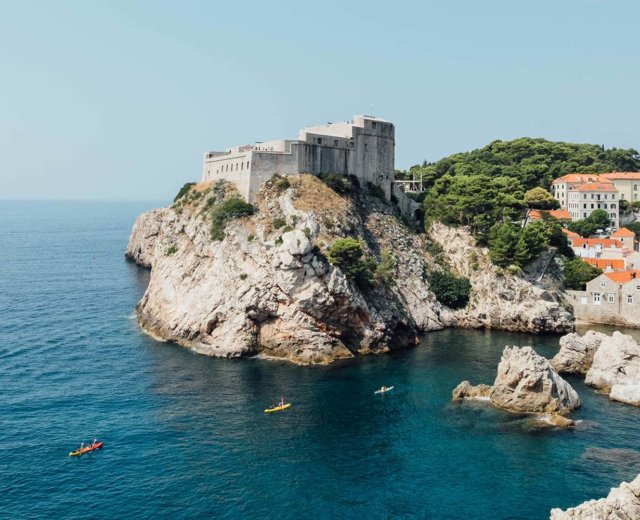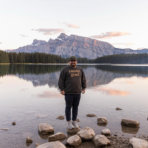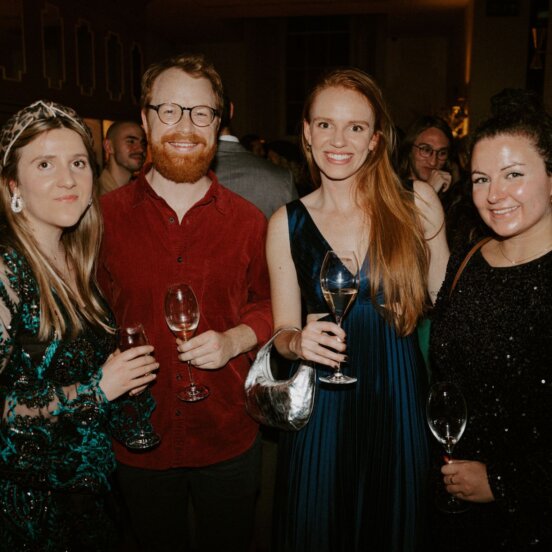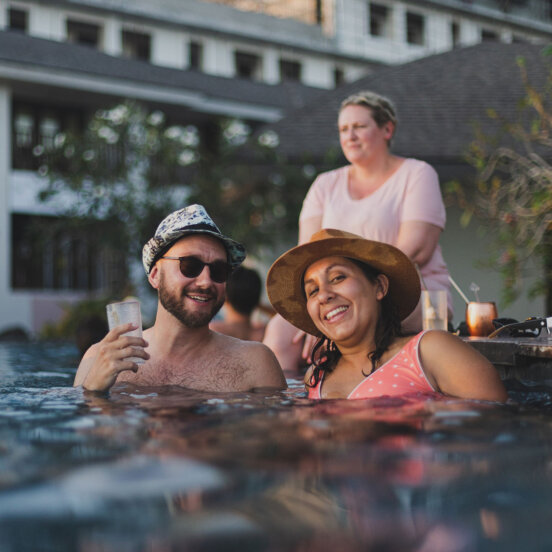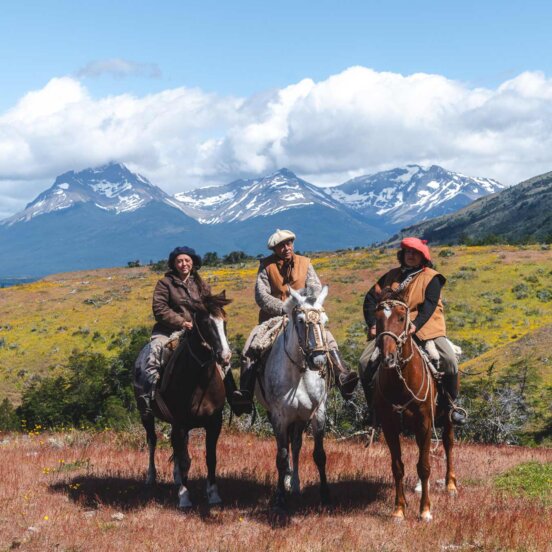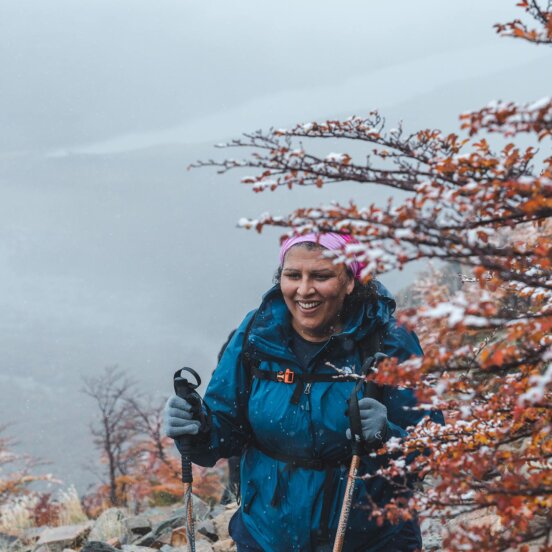In focus: photographer Connor McCracken talks us through his recent Tanzania trip
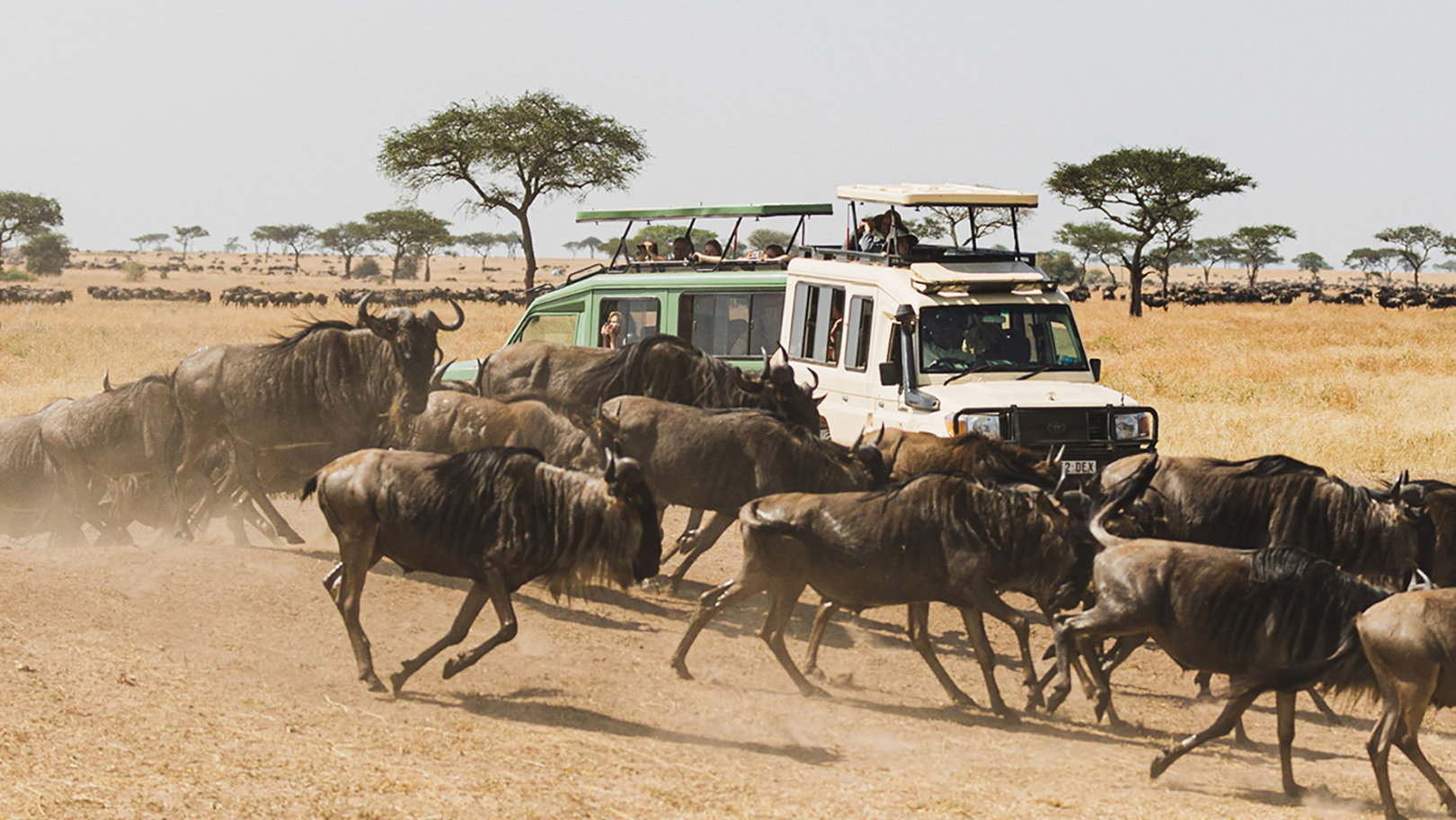
I’m from Vancouver, Canada, which is surrounded by hiking trails, forests and freshwater lakes. So, it was natural that I broke into photography around 10 years ago through my love of the great outdoors. I would trek in the mountains or the surrounding national parks, always with a camera to capture the spectacular landscapes of British Columbia. I was driven by the idea of showing people the wild beauty we locals are lucky to have on our doorstep.
From there, photography and videography became my vocation. As part of my Connor McCracken studio, I now work a lot with outdoor, travel and adventure brands. I’ve been on four Flash Pack trips prior to my Tanzania adventure, but this assignment was the first time I’d photographed animals in the wild.
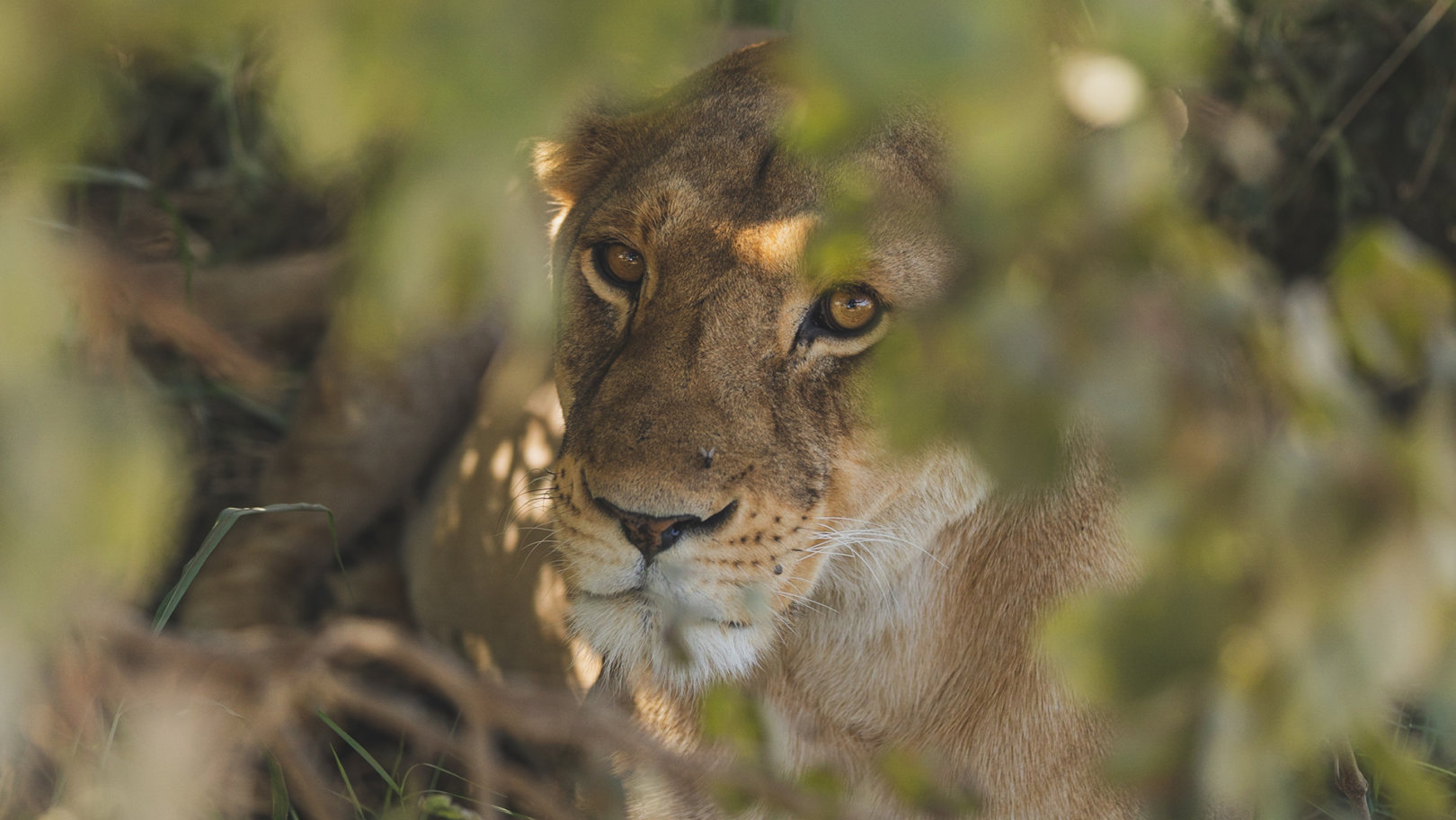
We saw so many animals as soon as we arrived
My favourite moment from the trip came in the first hour. I hadn’t been on a safari before and didn’t know what to expect. We saw so many animals, including lions and leopards, as soon as we arrived in the Grumeti River region. It was such a rare and exciting experience – and I quickly fell in love with the wildlife. I ended up taking more animal photos than I expected, because I was enjoying it all so much.
One particular lion was hiding in a bush, escaping the heat near the Seronera Airstrip. We’d just touched down and were heading to our riverside camp when I spotted it. Our Pack Leader, David, was keen to manage expectations with regards to wildlife sightings, cautioning that animals don’t show up on cue.
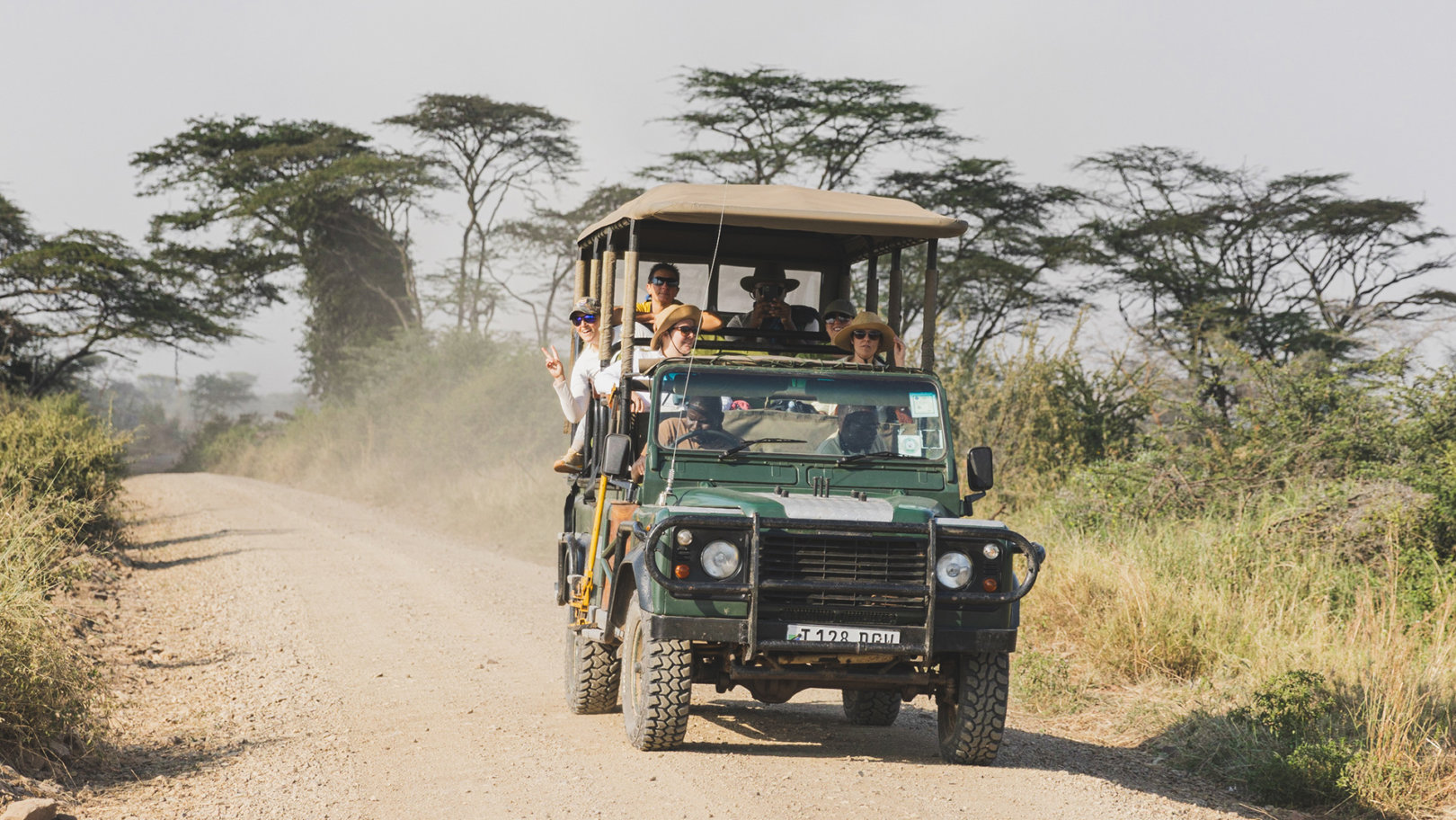
Riding high on 360-degree Land Rovers gave us unrestricted views
But, amazingly for us, we saw the lion just five metres from our truck in the first 20 minutes. Soon after, we spotted a leopard, elephants, giraffes and other grassland animals. Everyone was very excited – even David said he’d never known so much wildlife to appear so quickly.
Our days at the Bush Rover Migration Camp involved early morning and evening safaris. We’d be out at sunset in order to catch the animals at their most active as the weather cooled. Other groups in the region travelled on closed trucks, but riding high in open-top, converted Land Rovers meant we had unrestricted 360-degree views of the Serengeti plains. It felt like we had a real advantage with this experience: we could see in all directions and we never knew what side of the Land Rover an animal might appear.
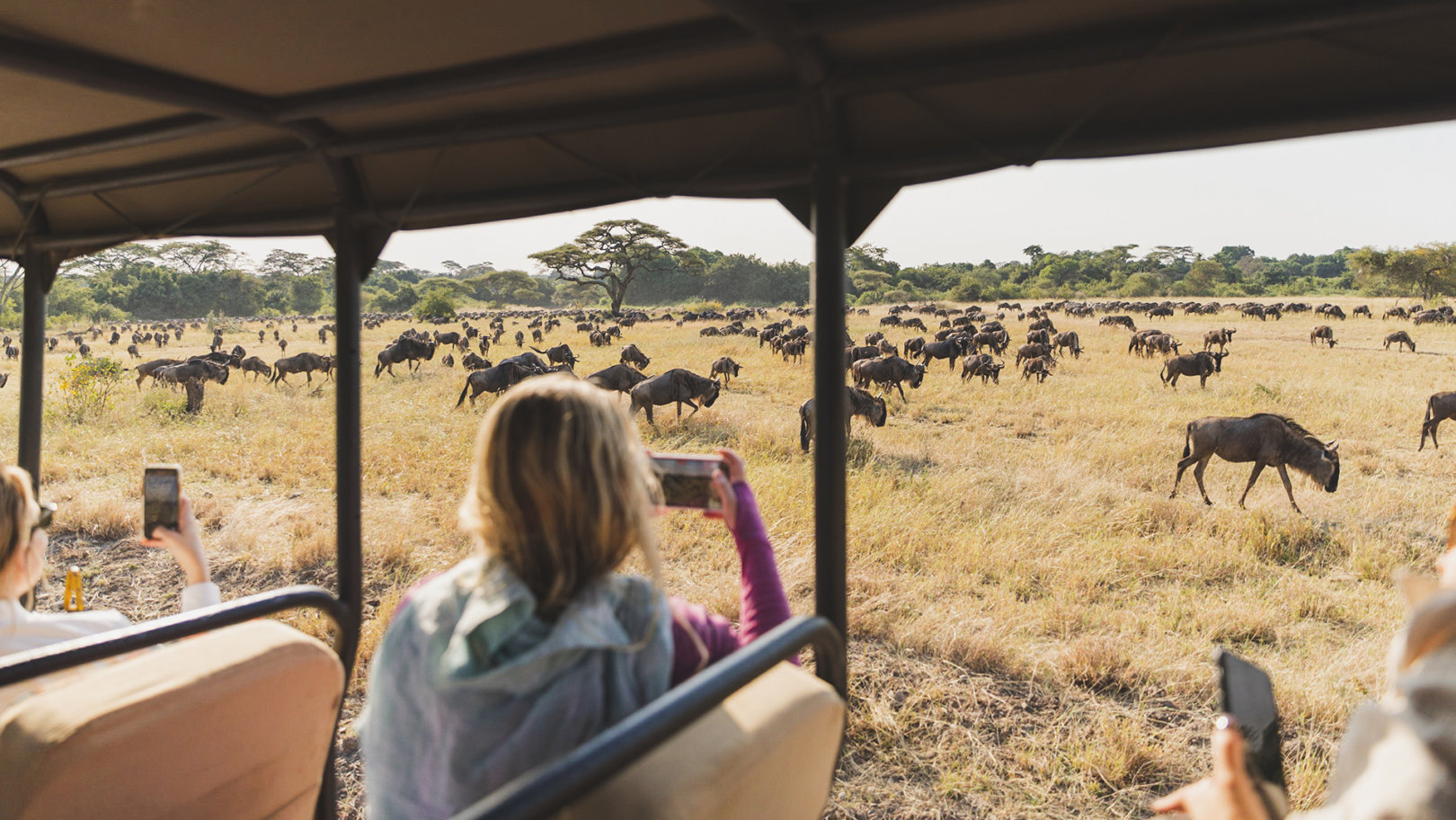
The wildebeest were unpredictable; they moved on impulse
Navigating the Serengeti Western Corridor, we passed through thousands of wildebeest migrating north for fresh water. Often the encounters were quite dramatic as the wildebeest were very unpredictable; they moved on impulse. You never knew what direction they might turn next – and they didn’t care if a Land Rover or two was in their way.
Often, we’d be surrounded by thousands of wildebeest, all hanging out and grazing. Then one of them would suddenly get spooked by a nearby lion and the entire herd would panic, blindly charging around us.
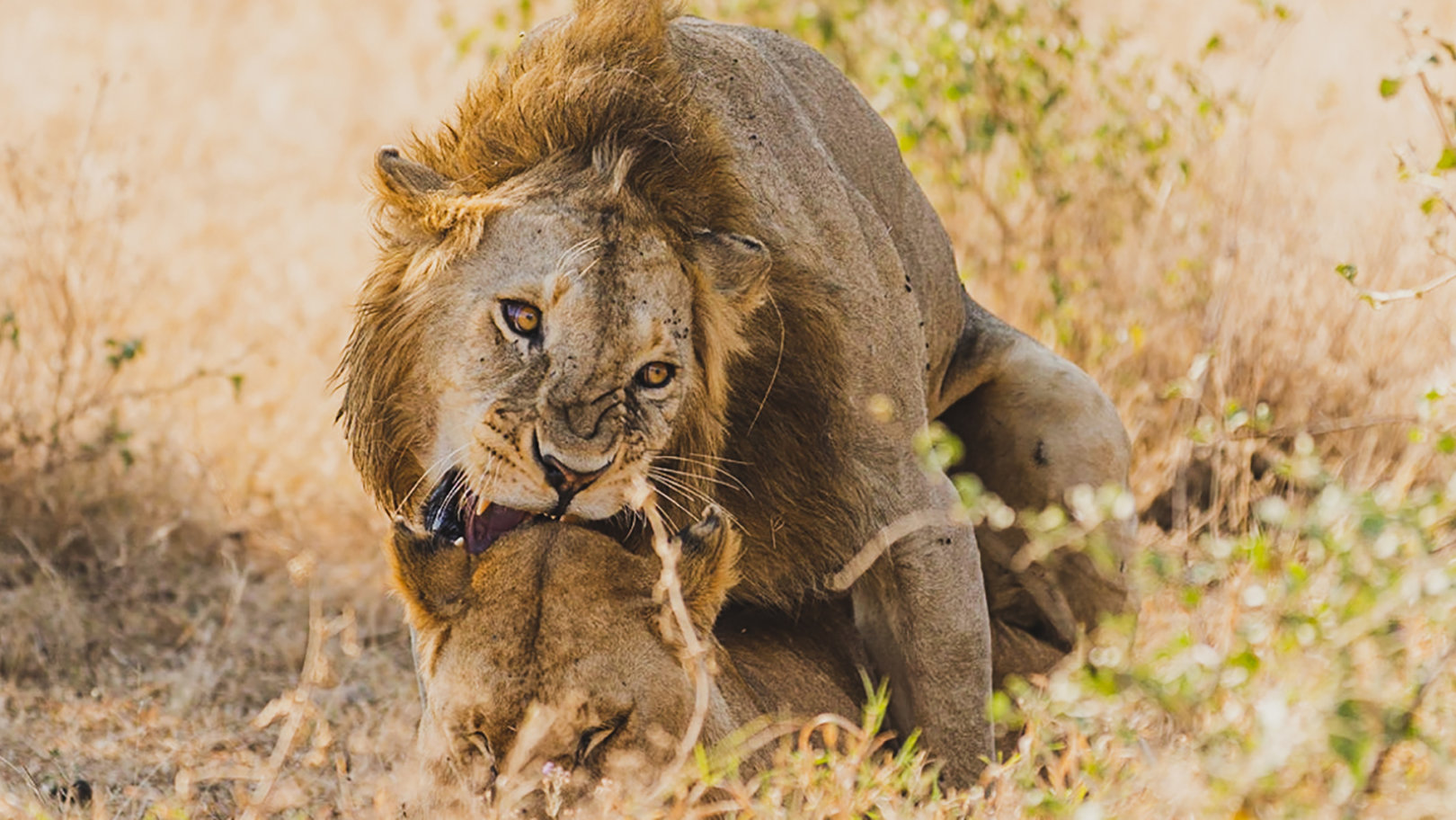
Lions mate on a very weird schedule
It was also happened to be honeymoon time in the Serengeti. We were lucky to come across a happy pair of mating lions multiple times on our safari. They didn’t seem to care that we were there.
Lions mate on a very weird schedule: they only breed in two-year intervals, during which time they can mate every 10 minutes over a period of four to five days. It’s a wild concept and quite intense. We would drive by and see a couple of lions chilling in the shade beside the road. If we waited just a little while, we’d see them mate – almost like clockwork.
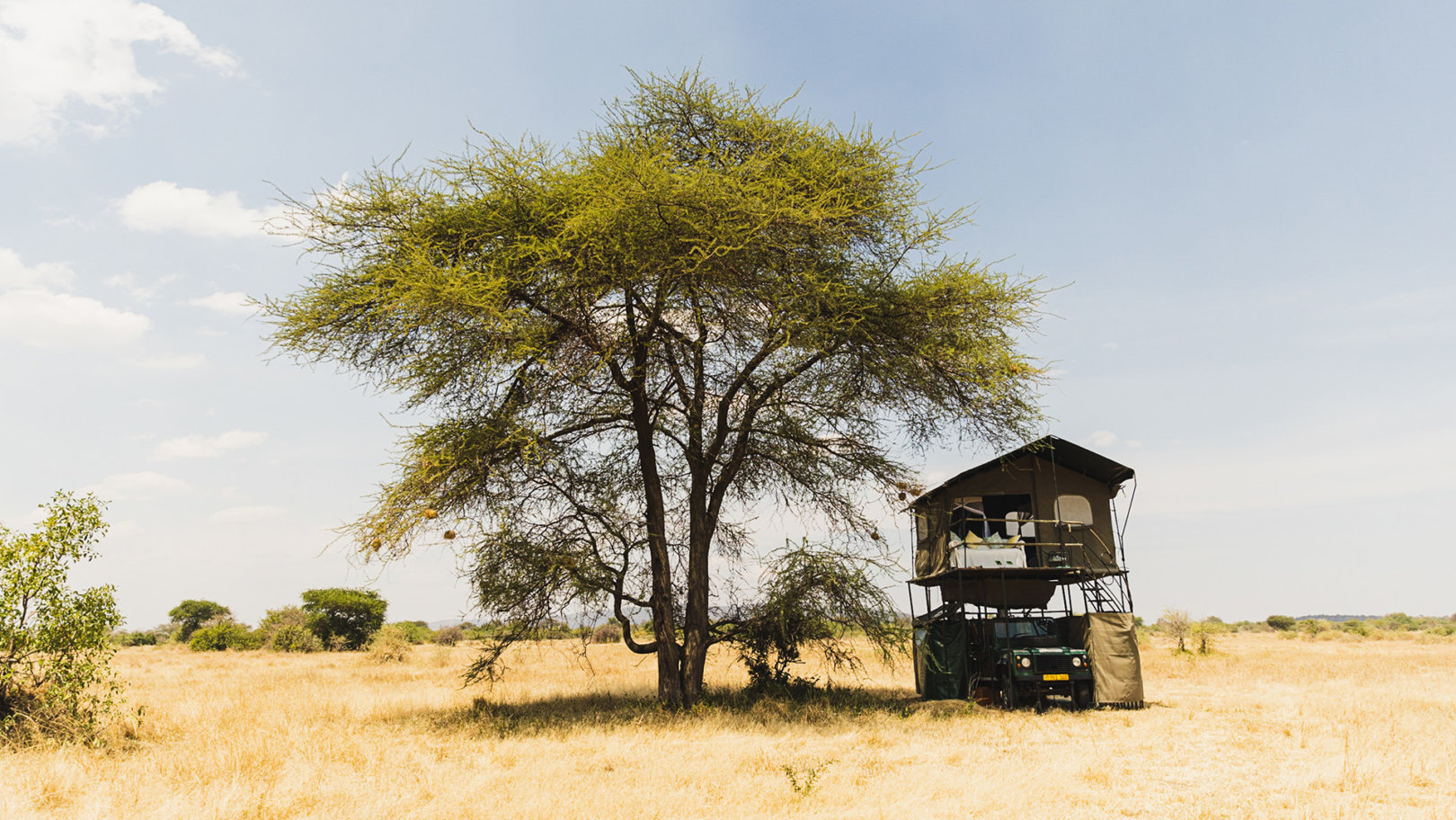
The whole camp was mobile – migrating with the wildebeest
When we weren’t on game drives, we spent the heat of the day relaxing in our converted Land Rover suites – essentially, luxury canvas-style rooms, perched above converted 4×4 cars. The whole camp is mobile; it moves every few months to keep pace with the migratory patterns of the wildebeest.
Inside each Land Rover, there’s a bathtub on the bottom level, an outdoor shower to the side, and a bedroom with a couch and beautiful views from the balcony at the top. Everything is solar powered, as it really was remote and off grid – we were hours away from anything beyond the natural world. Luckily, we had shade from the acacia trees, too.
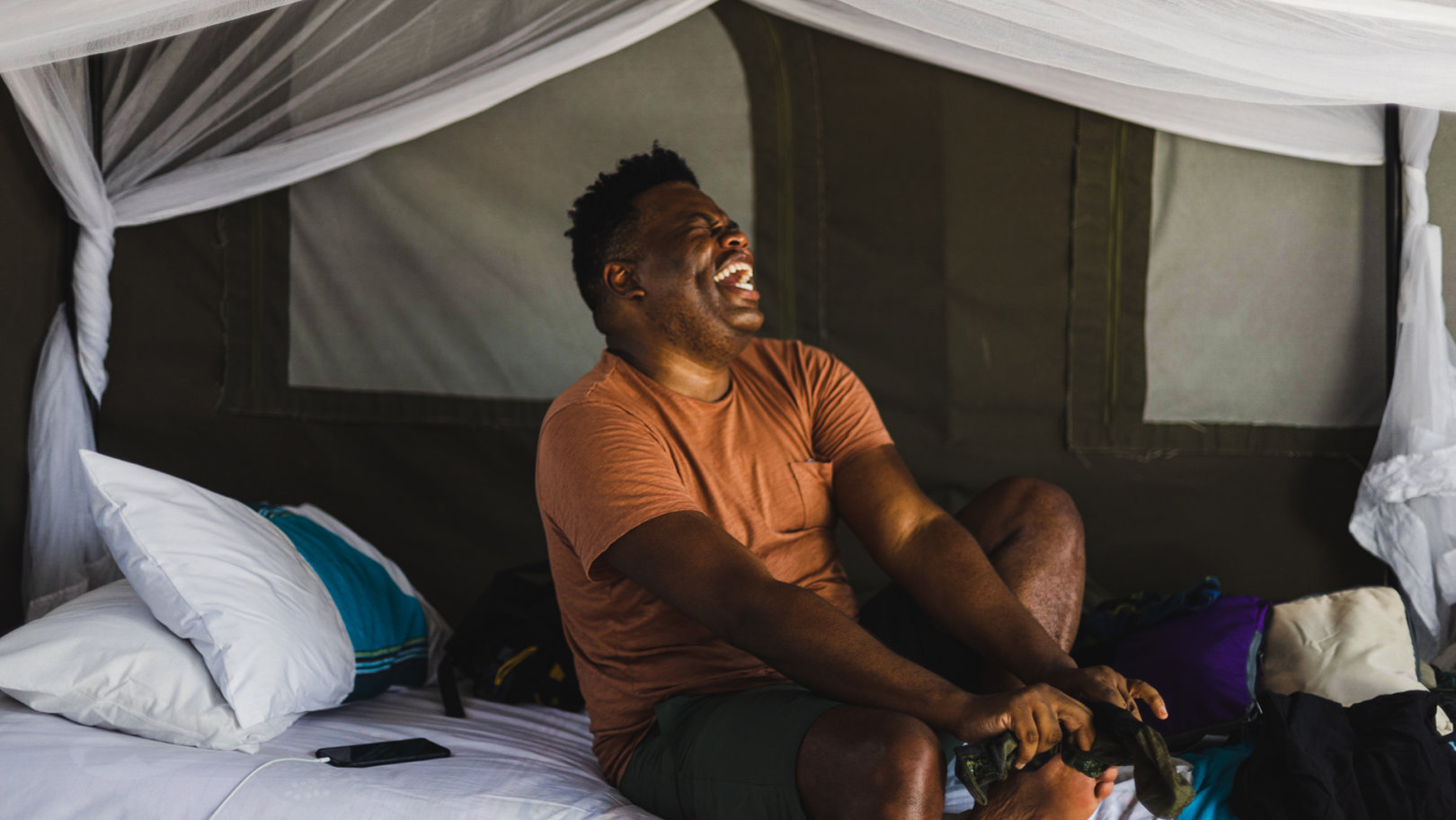
My roommate was less excited about the animal noises at night
My roommate, Mister, was less excited than me about the fact that you could hear hippos, lions and zebras all around us at night. He would wake up and hear their noises and freak out a little.
At first, when he heard animals grazing against the sides of the tent, he thought it was me playing a prank. In the evenings, we had staff accompanying us from the restaurant tents – a three-minute walk away – to our rooms in case we had to pause or make a quick exit.
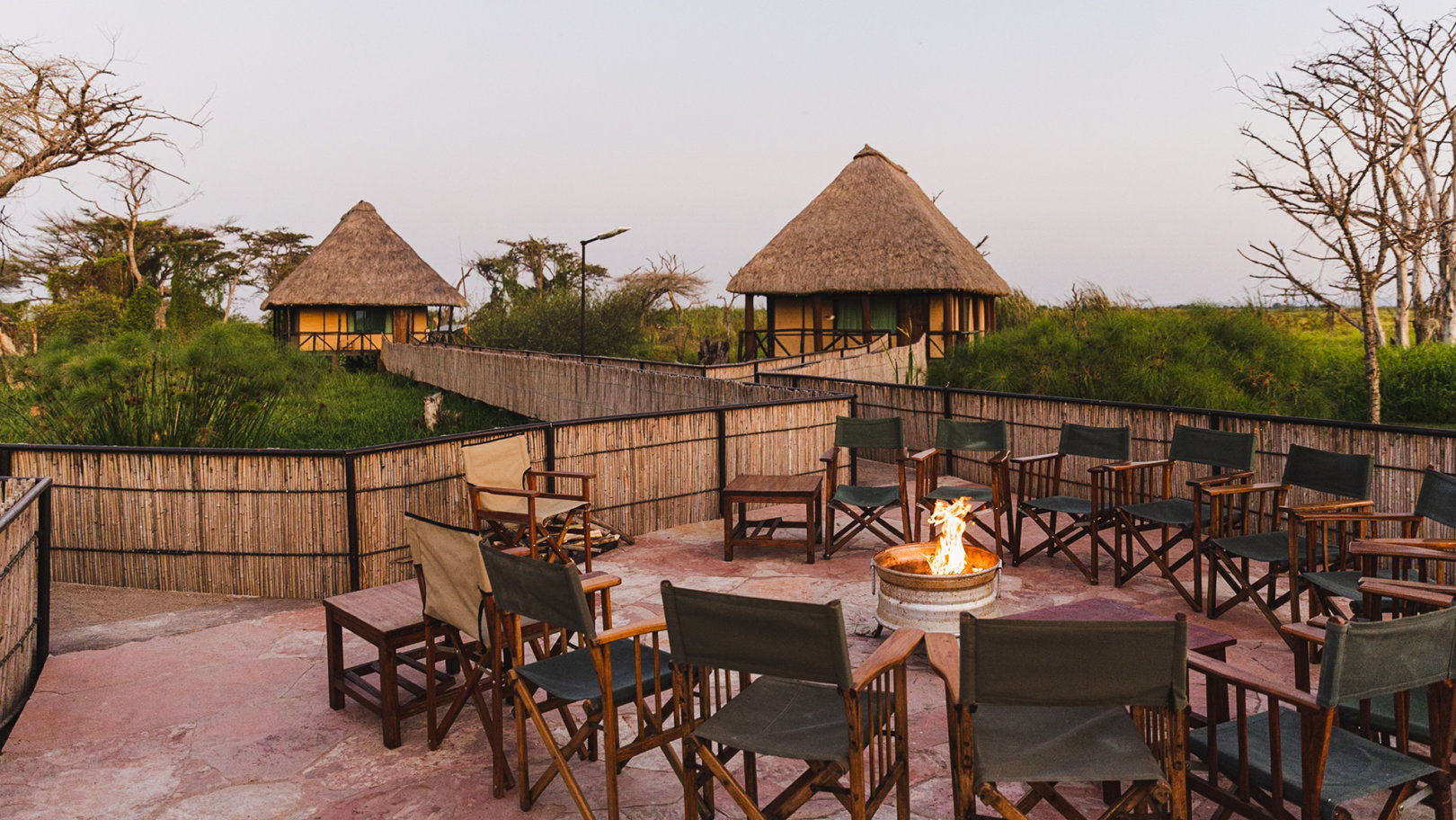
Our group would gather around the campfire, chatting and stargazing
Near the Equator, the sun sets early and it became a nightly tradition for our group to gather around the campfire, chatting and stargazing. As we travelled through Tanzania, our remoteness meant there was virtually no light pollution. Whenever we looked up at the night sky, you could see the Milky Way with a naked eye – it was pretty magical.
After the Bush Rover Suites, we moved onto a place called Little Okavango Camp on the shores of Lake Victoria – an elevated lodge with walkways, suspended over the flooded grasslands of Africa’s largest lake.
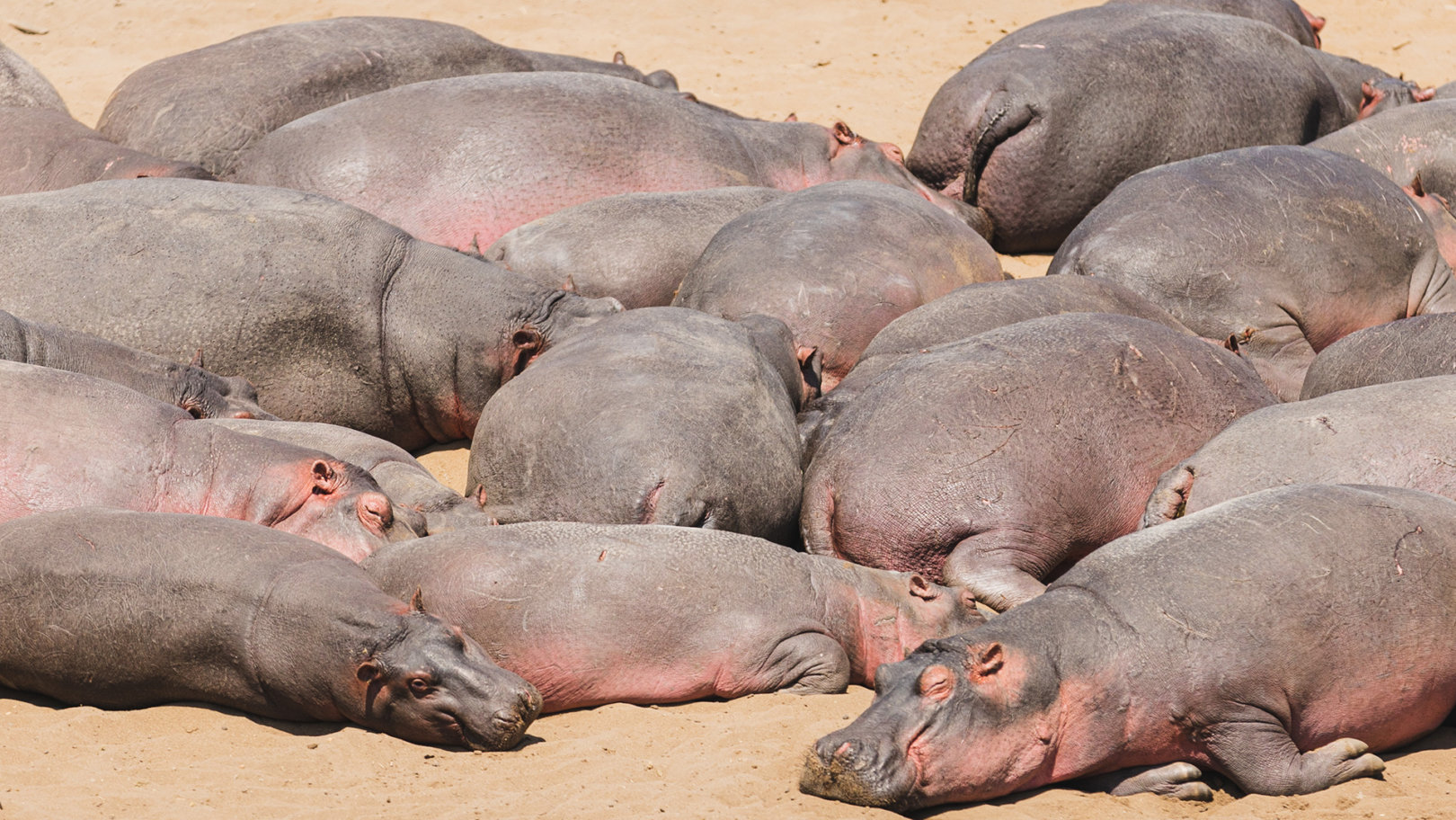
From our vantage point, we could see neighbouring hippos
It was a completely secluded setting and the team welcomed us with drinks and appetisers as the sun went down. The food was cooked by a private chef. From our vantage point we had incredible views of colourful birdlife and neighbouring hippos.
On our last night in the Serengeti, we went on a walking safari at sunset. It was very unique: down on the ground you notice things in a completely different way. We could tell how close nearby herds of elephants had been by examining fresh piles of dung, and we got up close and personal with some amazing birdlife. At one point, we got out our binoculars to look at a dazzle of zebras and buffalo in the area just ahead. Accompanied by armed rangers, we experienced the sights and smells of the Serengeti more intensely.
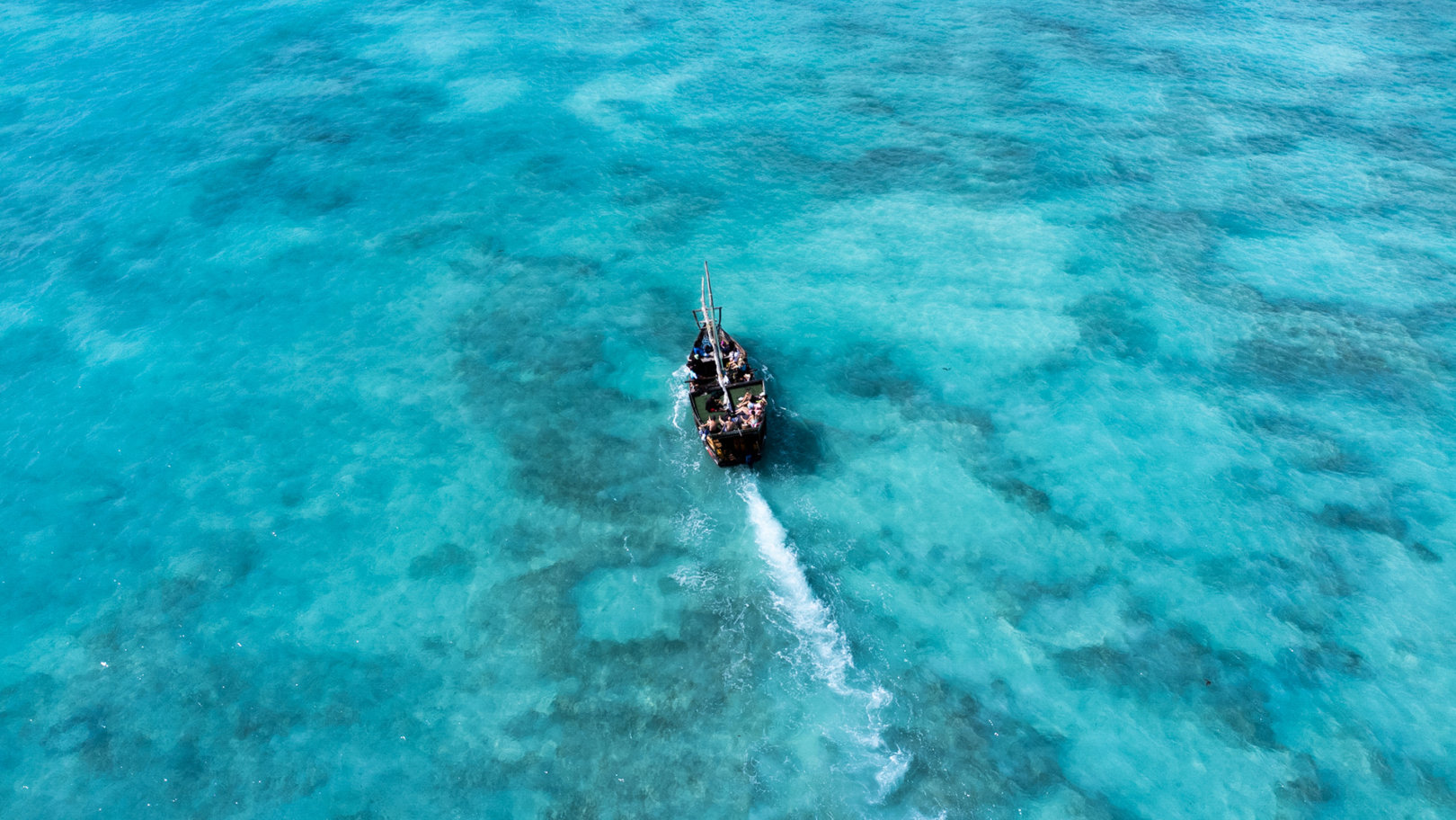
On the Spice Island of Zanzibar the waters are piercingly blue
We rounded off our Tanzania trip with a quick hop over to the Spice Island of Zanzibar, where the waters are piercingly blue. Our hotel, The Zanzibari, was right on the coast. Looking down at the water from up high, you could see just how beautiful and wild the Indian Ocean is.
Snorkelling in this region was unforgettable, too: the sea was perfectly clear with reefs and dolphins all around. After admiring the marine life for a while, we gathered for a beachside lunch on picturesque white sands.
Connor McCracken is a professional photographer who recently shot Flash Pack’s Tanzania adventure.
Got a story or adventure that could inspire a solo traveller like you? Tag @flashpack on social or email [email protected] to be featured.
Images: Connor McCracken

